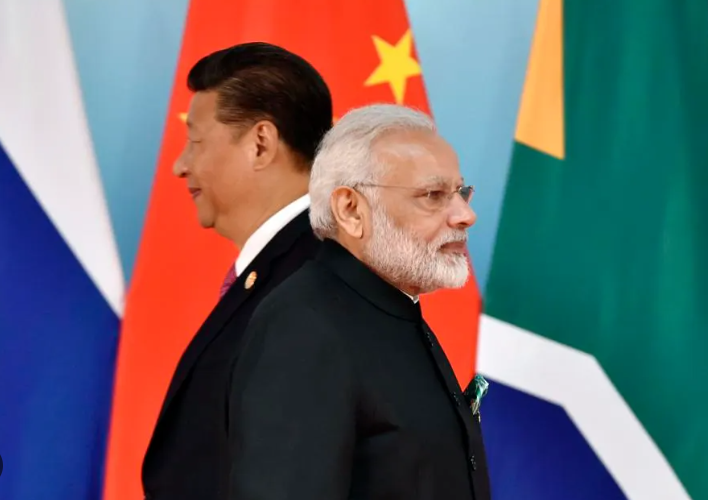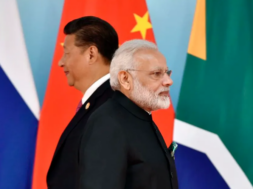
Roving Periscope: In economic growth, India’s rating goes up, China’s down
Virendra Pandit
New Delhi: On a day S&P Global Ratings said India is set to become the third-largest economy worldwide by 2030, Moody’s cut its outlook on the second-largest economy China’s sovereign bonds to negative on its rising debt crisis, the Dragon’s second debt downgrade since 1989, the first being in 2017.
In its “Global Credit Outlook 2024,” S&P also said on Tuesday that India will be the fastest-growing emerging market in the world, but its paramount test will be whether the country can become the next big global manufacturing hub.
In 2026-27, India’s gross domestic product (GDP) is expected to grow 7 percent. India is currently the fifth largest economy in the world behind the US, China, Germany and Japan.
S&P said India may grow at 6.4 percent in 2023-24 as compared to 7.2 percent in the previous financial year. The growth rate will remain at 6.4 percent in 2024-25 before climbing to 6.9 percent in the next and 7 percent in 2026-27.
“We see India reaching 7 percent in the 2026-27 fiscal…It is set to become the third-largest economy by 2030, and we expect it will be the fastest-growing major economy in the next three years,” S&P said.
“A strong logistics framework will be key in transforming India from a services-dominated economy into a manufacturing-dominant one,” it said.
Unlocking the labor market potential will largely depend upon upskilling workers and increasing female participation in the workforce. “Success in these two areas will enable India to realize its demographic dividend.”
S&P also said a booming domestic digital market could fuel expansion in India’s high-growth startup ecosystem during the next decade, especially in financial and consumer technology.
In the automotive sector, India is poised for growth, building on infrastructure, investment, and innovation, it added.
In contrast, Moody’s said it has lowered the outlook on China’s sovereign bonds from stable to negative on rising debt while retaining a long-term rating of A1 on the nation’s sovereign bonds.
Moody’s Investors Service cut its outlook for Chinese sovereign bonds to negative, underscoring deepening global concerns about the level of debt in the world’s second-largest economy.
China’s usage of fiscal stimulus to support local governments and state-owned companies is posing downside risks to the nation’s economy, the global grader said.
This change comes as China’s deepening property rout triggered a shift toward fiscal stimulus, with Beijing ramping up its borrowing as a key measure to bolster its faltering economy. That has raised concerns about the nation’s debt levels with Beijing on track for record bond issuance this year.
Moody’s last cut its credit rating on China in 2017, to A1 from Aa3, on the likelihood of a material rise in economy-wide debt and the impact that would have on state finances. That was its first China debt downgrade since 1989.
China’s economy has struggled for traction in 2023 as a rebound from restrictive Zero Covid policies proved weaker than expected and the property crisis deepened. Both manufacturing and services activities shrank in November, necessitating more government action to support a faltering recovery.
In October, Chinese President Xi Jinping signaled that a sharp slowdown in growth and lingering deflationary risks will not be tolerated, as the government increased its headline deficit to the largest in three decades. At 3.8 percent for 2023, the deficit-to-GDP ratio is well above a long-adhered 3 percent limit.
The revision allowed Beijing to sell 1 trillion yuan of additional sovereign bonds within the year to support disaster relief and construction. Local governments were also selling special re-financing bonds to swap some off-balance sheet debt carrying higher costs.
“Considering the policy challenge posed by local government debt, the central government is focused on preventing financial instability and likely has detailed insights into the financial health of local-government financing vehicles,” Moody’s said.
“Still, maintaining financial market stability while avoiding moral hazard and containing fiscal costs of support, is very challenging.”
Earlier this year, Fitch Ratings Ltd. said that it may reconsider China’s A+ sovereign credit score. The firm recently affirmed such a rating with a stable outlook.
S&P Global Ratings has kept China’s ratings at A+ with a stable outlook since its last downgrading in 2017 followed by a similar move by Moody’s.














